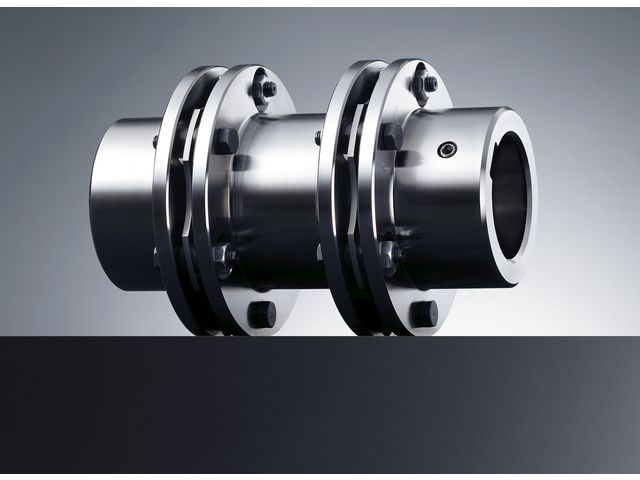Introduction to Diaphragm Coupling Working Principle
1. Flexible Design
Diaphragm couplings are designed with flexibility in mind, allowing for smooth transmission of torque while accommodating misalignment.
2. High Torque Capacity
These couplings have a high torque capacity, making them suitable for heavy-duty applications where reliable torque transmission is crucial.
3. Zero Backlash
Diaphragm couplings offer zero backlash, ensuring precision and accuracy in torque transmission without any lag or delay.
4. Durable Material
Typically made of stainless steel, diaphragm couplings are known for their durability and resistance to corrosion, making them ideal for demanding environments.
5. Maintenance-Free
With minimal moving parts and a simple design, diaphragm couplings are virtually maintenance-free, reducing downtime and operational costs.
6. Easy Installation
These couplings are easy to install, saving time and effort during the setup process and ensuring quick integration into existing systems.
Features of Diaphragm Couplings
1. Flexibility
Diaphragm couplings can accommodate angular, parallel, and axial misalignments, providing flexibility in various applications.
2. High Torque Transmission
They are capable of transmitting high torques efficiently, making them suitable for heavy-duty machinery and equipment.
3. Compact Design
Despite their high torque capacity, diaphragm couplings have a compact design, saving space and allowing for easy integration into tight spaces.
4. Vibration Damping

These couplings can effectively dampen vibrations, reducing noise and wear on connected equipment for smoother operation.
5. Long Service Life
Due to their durable construction and minimal maintenance requirements, diaphragm couplings have a long service life, ensuring reliable performance over time.
Application of Diaphragm Couplings
1. Precision Machinery
Diaphragm couplings are ideal for precision machinery applications where zero backlash and high torque transmission are essential for accurate operation.
2. High-Speed Rotating Equipment
Due to their ability to dampen vibrations and handle high torques, diaphragm couplings are suitable for high-speed rotating equipment such as pumps and compressors.
3. Industrial Automation
In industrial automation settings, diaphragm couplings can ensure smooth and reliable transmission of torque between various components and systems.
4. Marine and Offshore Applications
Given their corrosion resistance and durability, diaphragm couplings are commonly used in marine and offshore applications where reliability is crucial.
5. Energy Sector
Diaphragm couplings are well-suited for use in the energy sector, including power generation and transmission, due to their high torque capacity and maintenance-free operation.
Advantages of Diaphragm Couplings
1. Zero Backlash
Diaphragm couplings offer zero backlash, ensuring precise and accurate torque transmission without any lag or delay.
2. High Torque Capacity

These couplings can transmit high torques efficiently, making them suitable for heavy-duty applications that require reliable performance.
3. Maintenance-Free
With minimal moving parts and a simple design, diaphragm couplings are virtually maintenance-free, reducing downtime and operational costs.
4. Durability
Constructed from stainless steel, diaphragm couplings are durable and resistant to corrosion, ensuring long-lasting performance in demanding environments.
5. Easy Installation
Diaphragm couplings are easy to install, saving time and effort during setup and ensuring quick integration into existing systems.
How to Choose the Right Diaphragm Coupling
1. Torque Requirements
Consider the torque capacity of the coupling to ensure it can handle the required torque for your application.
2. Misalignment Tolerance
Choose a diaphragm coupling that can accommodate the expected misalignments in your system to prevent premature wear and failure.
3. Space Constraints
Take into account the compact design of the coupling to ensure it fits within the available space in your machinery or equipment.
4. Environmental Conditions
Consider the operating environment, including temperature, humidity, and exposure to corrosive elements, to select a coupling that can withstand these conditions.
5. Longevity and Maintenance
Look for a diaphragm coupling with a reputation for durability and longevity to minimize maintenance requirements and ensure reliable performance over time.

Installation Tips of Diaphragm Coupling
1. Proper Alignment
Ensure the shafts are properly aligned before installing the diaphragm coupling to prevent unnecessary stress and wear on the components.
2. Tightening Procedure
Follow the manufacturer’s recommended tightening procedure and torque specifications to secure the coupling in place correctly.
3. Regular Inspection
Periodically inspect the coupling for signs of wear or damage and replace it if necessary to prevent unexpected failures.
4. Lubrication Maintenance
Keep the coupling properly lubricated according to the manufacturer’s guidelines to ensure smooth operation and extend its service life.
5. Replacement Importance
Replace the diaphragm coupling at the first sign of wear or damage to prevent further issues and maintain the efficiency of your machinery or equipment.
About HZPT
HZPT is a leading manufacturer and exporter specializing in coupling design, development, and production. With over 16 years of experience, we offer high-quality products, competitive prices, and excellent customer service to clients in Europe and the United States. Our couplings are CE and TUV certified, reflecting our commitment to quality and reliability. Contact us today to discuss your custom coupling needs and experience the HZPT difference.